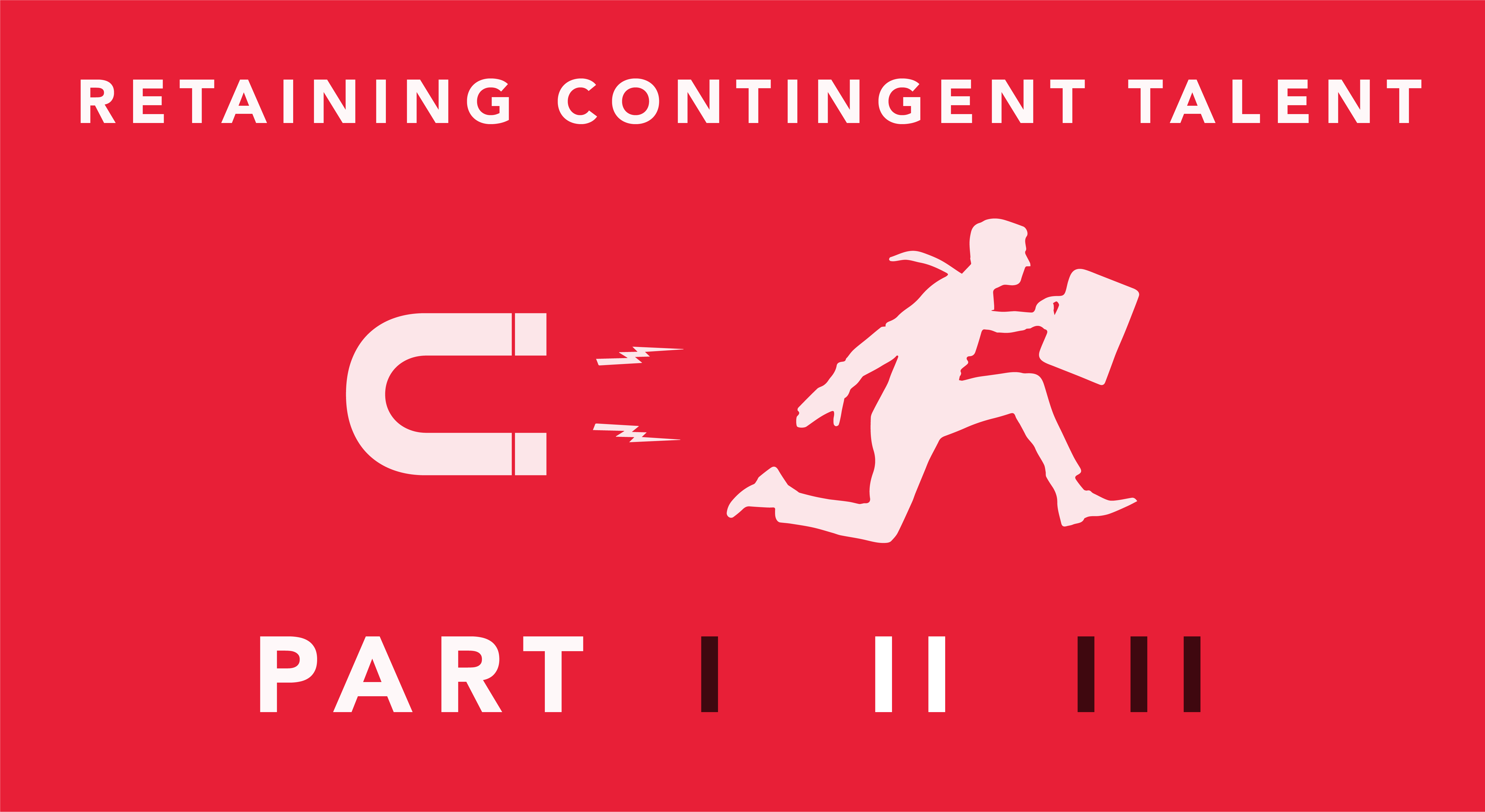Retaining Contingent Talent in an Employee’s Market: Part 2 of 3

The Work Institute’s annual report on workforce retention was compiled from more than 234,000 exit interviews. It is the only report of its kind revealing the real reasons employees leave or intend to leave their jobs. The 40-page document is full of exceptional insights backed up by hard data. Although developed with full-time workers in mind, much of it is applicable to contingent workforces as well. In Part 1 of this series, we examined half of the top reasons why employees leave their jobs and how to develop retention strategies to prevent turnover. Part 2 will focus on the remaining reasons workers leave a job and how to keep them from leaving.
To recap, the Work Institute report revealed the top 10 reported reasons behind workers’ decision to bail out:
- Workers seek career development – opportunities for growth, achievement and security (21%)
- They seek better work/life balance (13%)
- Management behavior lacks a positive, productive attitude (11%)
- For reasons of well-being such as physical, emotional or family-related issues (9%)
- Because compensation and benefits are more attractive elsewhere (9%)
- Due to relocation concerns such as moving away from proximity to the workplace (9%)
- To find more attractive job characteristics/enjoyment of the nature of the tasks/work (8%)
- Involuntary causes such as layoffs or terminations (7%)
- Retirement (7%)
- Work environment issues like physical and cultural surroundings (6%)
Of these 10, three are not preventable causes such as retirement, termination/layoff and relocation. Let’s look at the remaining four preventable causes.
Reason # 4 | Employees leave to take better care of themselves and/or their families—wellbeing. Of the 9% of poll respondents who cited wellbeing as the reason for leaving their job, a full two-thirds said they left for general or personal health reasons. Almost all the rest said they left because of caregiver issues such as ill/aged parents to care for, special needs children, etc.
Whether it is for one’s personal wellbeing or that of their loved ones, wellbeing is a powerful motivator for changing employment. The Work Institute concludes, “Employers that do not actively pay attention to their workers’ needs to take care of themselves and their families will see turnover. It’s critical to understand the challenges that employees face and work with them to accommodate special needs to ensure you keep good employees as long as possible.” nextSource recommends developing a humane policy for wellbeing challenges facing contingent resources. Having such a policy in place and publicizing it during recruitment is a powerful way of attracting and retaining talent.
Reason # 5 | Compensation and benefits is the most expected reason on the list with 9% of all respondents saying they left their last job for one with better pay and/or bennies. Not surprisingly, compensation was cited by 87% of those electing to change jobs. To help retain those workers, workforce management programs should provide a path toward increased pay rates/raises for temp laborers to work towards. Obviously, a hiring organization should also be mindful of keeping their pay rates competitive. In this environment, workers will know quickly if they’re being underpaid compared to their peers.
Reason #6 | Unreasonable job characteristics are defined as unmanageable workloads or unrealistic expectations leading to on the job stress. This reason has increased in the annual results by 130% since 2010. Combat this dynamic with policies that provide adequate tools and proper training. Most of the respondents citing this reason for leaving report that they were not provided adequate training or given the tools they needed to succeed in their assigned role.
Reason # 7 | Work environment (i.e., culture issues) was mentioned by 6% of respondents. Whether this manifested in the form of problematic co-workers or simple cultural mismatch between contractors and the hiring organization, the cultural match between workers and employers cannot be understated. While there’s no accounting for a specific problem between a worker and the overall mission or values of the hiring organization, there is something that can be done about cultural dynamics. The report suggests, “The upward trend of the Work Environment category shows that employers are not doing enough to understand and improve conditions that could prevent turnover. Although a lesser-cited reason for leaving, conditions related to the work environment are more controllable than other factors. Employers should do all they can to improve this area, as employees do not have to tolerate poor physical conditions or an undesirable atmosphere when better conditions are available to them elsewhere.”
With all seven preventable reasons for employee departure having been examined in Parts 1 and 2 of this three-part series, we invite readers back for the third and final installment wherein we’ll discuss the financial impact of turnover and offer suggestions on how to develop effective retention strategies.